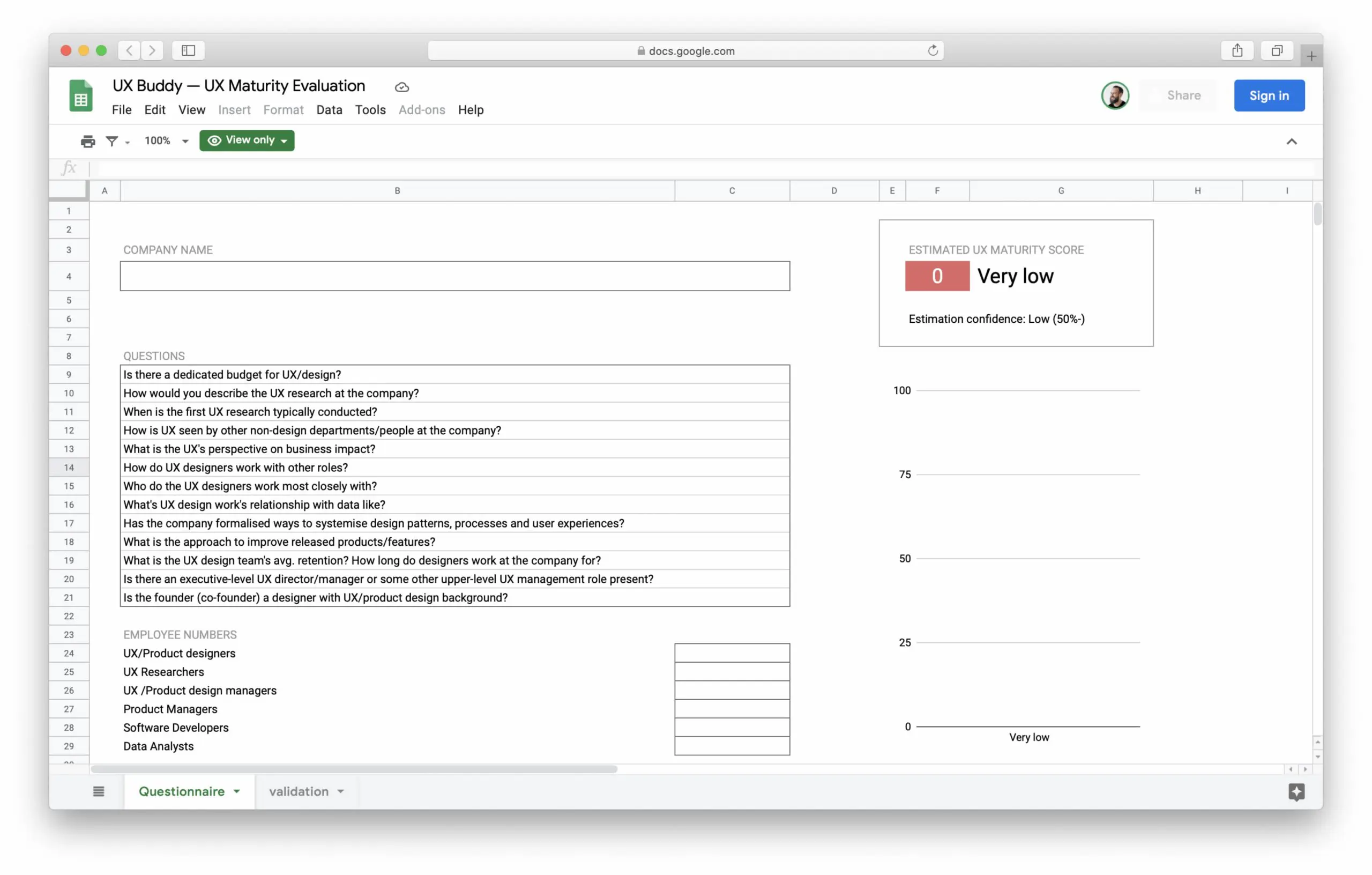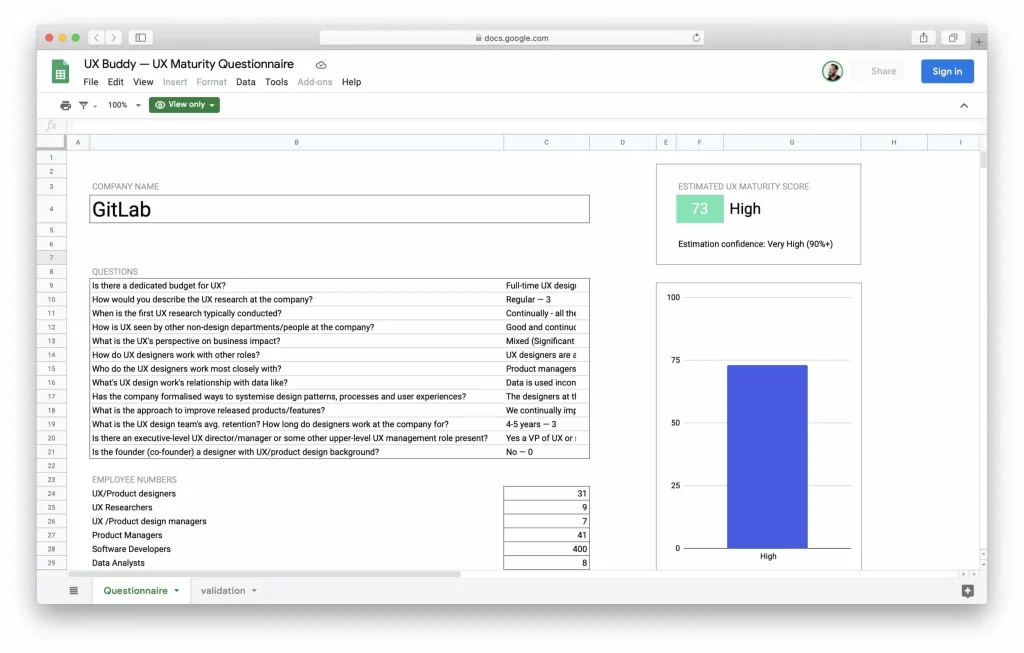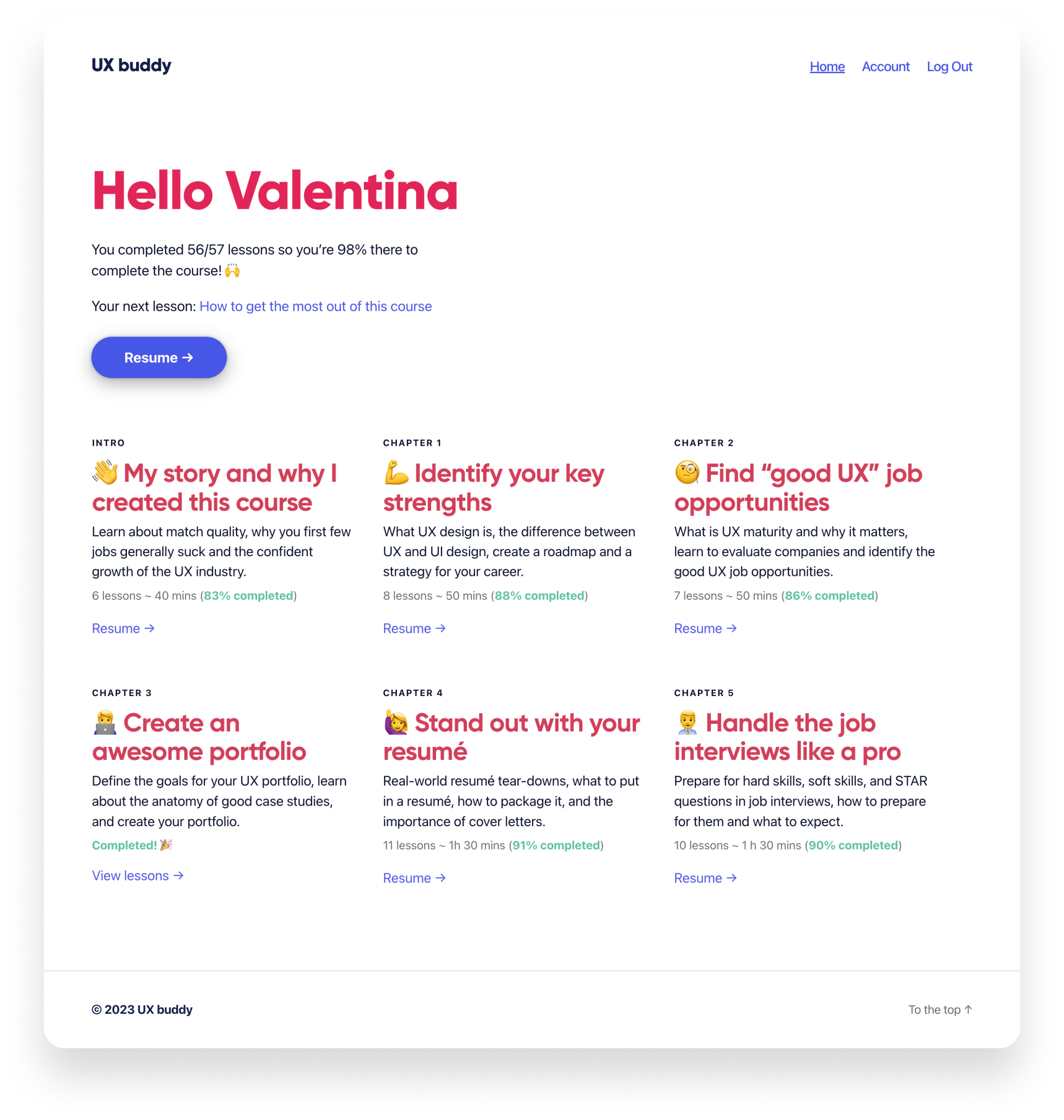Something wasn’t right. I had just received the work contract to review and the name of the role stated throughout was only “designer.” But it was the job that would finally allow me to move to London, something that I had wanted for a long time, so I ignored my gut feeling and signed it.
My new online course UX Buddy helps designers create their UX portfolio, find, and get an awesome UX design job. It’s now live and enrolment is open for a couple more days. Check it out!
I was presented with this opportunity in the summer of 2015. Until that point, I had spent two years living in Germany and working for an early-stage startup in Luxembourg. It was the job that I moved abroad for. Now, I finally had the chance to move to London and kickstart my UX design career there. Or so I thought. The gut feeling that I ignored was right. I found it odd at first, but then I consoled my self with something like: they probably see designers as generalists, that’s why they didn’t use UX designer or Product designer to describe the role. Being self-taught and having mostly freelance and early-stage startup experience at the time, I had already considered myself a generalist. So I deluded myself that calling the role just “designer” was actually a good thing and took the job.
I left that job only 10 months after I joined. It’s still my shortest tenure with a company in my career. It turned out that designers had to do all sorts of things there. Preparing slide decks for executives, and printing and cutting out cards with names for the VIPs for events were among them. But that was only one side of the problem. The other one was that designers were completely outnumbered, and the product managers were the only ones deciding what gets done and how. There was little freedom for designers to have an impact on what they worked on and there was little research conducted. There was only one UX researcher at the company and all he had time to do was conducting user testing sessions.
For designers to do high-quality design work, they need to work at companies that truly understand design.
— A vital lesson I learned
But I’m glad I went through this experience because I learned a vital lesson. In order for designers to do high-quality design work, they need to work at companies that truly understand design. Here’s the catch though, there’s a tiny amount of such companies out there. This was eight years ago and the situation has improved, but I’m convinced that a lot of companies still don’t understand design. They treat it as something that makes things look pretty, so they hire UI designers to do UX design for them. In the end, it’s often the product managers who end up doing the UX design (they decide what gets worked on and how it’s done) and the UI designers then wrap it up in a visually appealing UI. But beautifying a solution that doesn’t solve a problem won’t magically make it work.
I’ve now known for years that companies like these have a low UX maturity. They don’t understand what UX design really is so they don’t have the mentality and the processes in place that would allow design to have an impact. Here are some of the characteristics of low UX maturity companies:
- They mostly think of design as what things look like
- They do little or even no UX research
- If they do UX research, they conduct it after the project/feature is released
- Employees see design only as a step in the process (when in fact UX design is the process)
- They don’t invest in things like design systems and establishing problem and solution validation processes
- They rarely have a design representative at the executive level (director or equivalent)
Evaluating the UX maturity
The process of evaluating the UX maturity of a company can be rather simple. Designers who would like to join a company where they get to do more interesting and better work should come up with a list of parameters that are important to them. For example, if a designer currently works at a company where no or very little UX research is done, they could put on their list something like: UX research is done regularly and systematically. Then, they can find out if that’s the case whenever they speak to company employees in job interviews.
Here’s a list of some of the parameters I recommend for evaluating UX maturity.
Dedicated UX budget
This one is simple. Does the company have full-time UX designers and UX researchers? UI and visual designers don’t count here. If a company has full-time employees dedicated to UX design and research it’s a good first indicator of their commitment to design. Sometimes, companies will first hire UI or visual designers, and only then they’ll start to look for UX designers. That could indicate that their understanding of design is limited. Whoever takes that first UX design job at such companies will have a lot of battles to fight in order to improve that. UX designers and researchers need to be fundamental and equal parts in product teams, if they’re only contractors who work with them part-time, they’re neither fundamental nor equal.
Systematic and strategic UX research
Two things are crucial when it comes to UX research: is it practised at the company, and if yes, when and how often? You’d be surprised by how many companies still don’t do any UX research at all. I receive emails from frustrated designers all the time, and one of their main frustrations is about the lack of research being done at their companies. When that’s the case, the UX maturity of the company is most likely low. If they do UX research, the sophistication of it and its impact are the most telling factors.
The other crucial thing is timing. When is UX research performed? In the end, when most of the work is done, and the product is about to be released? Or does it start before any work gets done, informing the team whether a feature should be built at all? How about between the different stages of the product development cycle? Companies that only do UX research to validate what they already made tend to be on the lower end of the UX maturity chart. Companies that start doing research early and do it often are usually on the higher end of that chart.
Business impact of UX design
The next major thing is the UX team’s impact on the company’s business. Is UX design aligned with business KPIs and do other departments think about UX too? Is the design team data-informed? Who do the designers work most closely with? Who do they report to? When UX design work starts to have a business impact, that’s when things start to get interesting. It’s the next level from receiving user feedback. It’s using that feedback and tracking the market response to maximise the value UX design can bring.
Design executive or founder
I would never have thought about this early in my career—what difference is it if there’s a Director of UX or not? Or if the founder or at least a co-founder of the company has a UX design background? As it turns out, it can have a significant impact on the UX maturity of a company. If a Director of UX is present at the company, they’ll fight the political battles so that you don’t have to. They’ll push for a better understanding of what UX design is, and because they’re an executive, they’re more likely to be heard. The same applies to the founder/co-founder with a design background. If they understand UX design’s value, this understanding will be somewhat built into the company already. It simply makes your job a lot easier and enjoyable. The design executive is the design’s chair at the table when important things are discussed.
UX maturity questionnaire
These are just four out of 13 parameters that I recommend when evaluating UX maturity of a company. When I created UX Buddy, an online course to help UX designers find and get an awesome UX design job, I created a sophisticated questionnaire in Google Spreadsheets that will help you evaluate UX maturity based on 13 questions and some additional data that you can easily obtain with a quick research on LinkedIn.

Using my questionnaire to evaluate a company’s UX maturity is really simple. Here are the basic steps:
- Open the UX Maturity Questionnaire.
- Go to File → Make a copy
- Name your copy of the document. I recommend starting with the company name, so for example
GitLab — UX Maturity Evaluation. This way it will be easier to find the right document later on when you’ll have one for each of the companies that you’re interviewing with. - Fill in the company name at the top.
- Answer the questions. If you don’t know the answer to one of the questions, skip it.
- Fill in the Employee Numbers section.
Based on the questions you answer and the data you fill in the questionnaire will give you two things: the evaluation of the UX maturity for a company, as well as estimation confidence. The more questions you answer and the more data you fill in, the higher the estimation confidence will be. Keep in mind that this is just a tool for evaluating UX maturity. It’s a starting point and a way to give you an idea about a company’s UX maturity. It’s not 100% accurate because it’s not possible to create a tool that would be so accurate. But it’s enough to inform your career decisions. Take a look at an example of a filled in questionnaire for my evaluation of GitLab’s UX maturity (Fig 2).

Don’t know the answers? Look for them in job interviews
Are you interviewing with a company and you don’t know answers to most of these questions? The job interviews are the perfect opportunity to find the answers you need. I interview a lot of designers for open roles at GitLab and I’d say that around 90% of them don’t use the opportunity to ask important questions. Questions that would help them find out if GitLab is the right company for them. They’ll often ask basic and even trivial questions like what it’s like to work from home? What a wasted opportunity! Use the questions in this questionnaire as a starting point to come up with questions for your job interviews.
Conclusion
When should designers evaluate UX maturity of companies? When they’re considering joining a company (or work for them as contractors), or even when they already work for them to establish a baseline. Do you have some doubts about the company you work for? Maybe it feels like you’re not using your full potential but you’re not sure exactly why? Try to evaluate the UX maturity of the company. Maybe it’s time to switch and find a better UX design job with my course UX Buddy. Here’s a sneak peek (Fig 3).

UX Buddy also helps designers write interesting case studies, design awesome portfolios, stand out with their resumé, and prepare for hard job interviews and design tasks. It’s an all-in-one course for taking your UX design career to the next level.
That’s it for this post, what are your thoughts? Do you work for a company with a low UX maturity? Or maybe you worked for one in the past? What was it like? How did you get to work for a company that has a higher UX maturity? Let me know your thoughts below in the comments section 👇

All that is true but the more interesting aspect for me, and perhaps the more important aspect, is what environment do you prefer to work in? One where you can have a bigger impact because the bar is lower and you raise it significantly, or one where you have a minimal one, because the bar is higher, but the outcome is a better overall design. And from there you can shift focus to what has a more significant positive impact on society.
That’s a good point James! I think the problem with when the bar is low can be that it’s an environment where designers can’t raise the bar simply because design isn’t valued enough. But when that’s not the case it’s quite exciting to be able to do that.
Hi, great content, I tried to export to Microsoft excel but getting a lot of errors, any help would be greatly appreciated? Thanks.
This content is fantastic. Thanks for sharing!
https://thedziners.com/category-type/costume-designers/